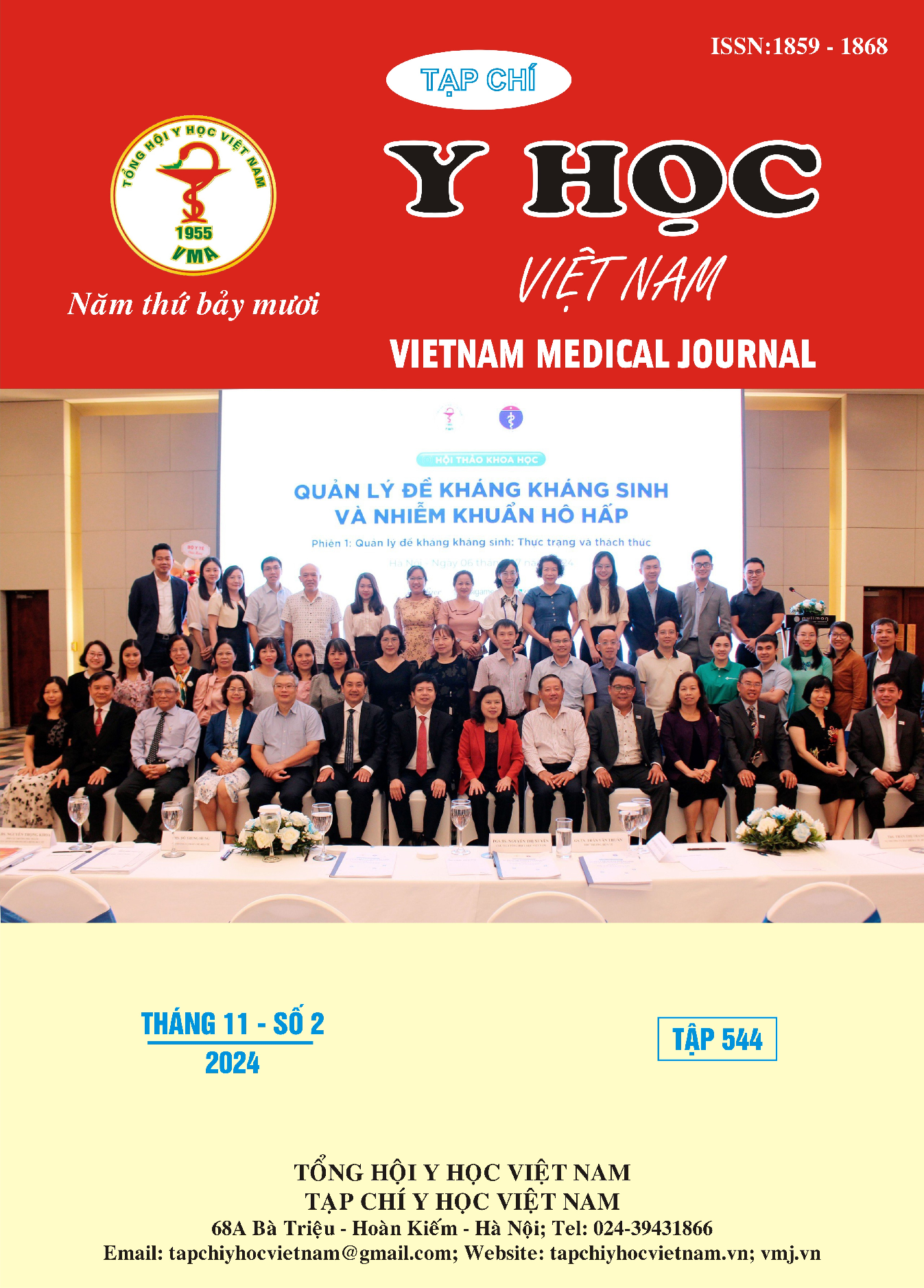THE CAUSES OF SEPSIS IN PRETERM NEWBORNS AT HANOI OBSTETRICS AND GYNECOLOGY HOSPITAL AND SOME RELATED FACTORS
Main Article Content
Abstract
Objective: This study aimed to determine the causes of sepsis in preterm newborns at Hanoi Obstetrics and Gynecology Hospital and some related factors. Subject and method: A descriptive study of 106 preterm newborns diagnosed with neonatal sepsis and had positive blood culture results at Hanoi Obstetrics and Gynecology Hospital from August 2022 to May 2024. Results: The main cause of sepsis in preterm newborns was Gram – negative bacteria accounting for 78.9%, Gram – positive bacteria accounted for 15.6%, fungi accounted for 5.5%. In early onset neonatal sepsis, Gram – negative bacteria accounted for the highest proportion, the most common was E. coli (44%). In late onset neonatal sepsis, Gram – negative bacteria also accounted for the highest proportion, the most common were K. pneumoniae (36.9%) and E. coli (32.1%). Some factors associated with early onset neonatal sepsis included maternal fever in labor, vaginitis, prolonged rupture of membranes more than 18 hours, dirty amniotic fluid. Some factors associated with late onset neonatal sepsis included gestational age less than 32 weeks, birth weight less than 1500g, insertion of central venous catheter. Conclusion: The main cause of sepsis in preterm newborns was Gram – negative bacteria, the most common were E. coli and K. pneumoniae. Some factors associated with early onset neonatal sepsis included maternal fever in labor, vaginitis, prolonged rupture of membranes more than 18 hours, dirty amniotic fluid. Some factors associated with late onset neonatal sepsis included gestational age less than 32 weeks, birth weight less than 1500g, insertion of central venous catheter.
Article Details
Keywords
Neonatal sepsis, preterm newborns
References
2. Nguyễn Thị Quỳnh Nga, Nguyễn Thị Vân, và Nguyễn Thu Vân (2020). Nhiễm khuẩn sơ sinh, Bài giảng Nhi khoa tập 1. Nhà xuất bản Y học, 119–129.
3. Fleischmann-Struzek C., Goldfarb D.M., Schlattmann P. và cộng sự. (2018). The global burden of paediatric and neonatal sepsis: a systematic review. Lancet Respir Med, 6(3), 223–230.
4. Kruse A.Y., Thieu Chuong D.H., Phuong C.N. và cộng sự. (2013). Neonatal bloodstream infections in a pediatric hospital in Vietnam: a cohort study. J Trop Pediatr, 59(6), 483–488.
5. European Medicine Agency Report on the Expert Meeting on Neonatal and Paediatric Sepsis, 8 June 2010.
6. Panigrahi P., Chandel D.S., Hansen N.I. và cộng sự. (2017). Neonatal sepsis in rural India: timing, microbiology, and antibiotic resistance in a population-based prospective study in the community setting. J Perinatol Off J Calif Perinat Assoc, 37(8), 911–921.
7. Patel D., Nimbalkar A., Sethi A. và cộng sự. (2014). Blood culture isolates in neonatal sepsis and their sensitivity in Anand District of India. Indian J Pediatr, 81(8), 785–790.
8. Santhanam S., Arun S., Rebekah G. và cộng sự. (2018). Perinatal Risk Factors for Neonatal Early-onset Group B Streptococcal Sepsis after Initiation of Risk-based Maternal Intrapartum Antibiotic Prophylaxis—A Case Control Study. J Trop Pediatr, 64(4), 312–316.


